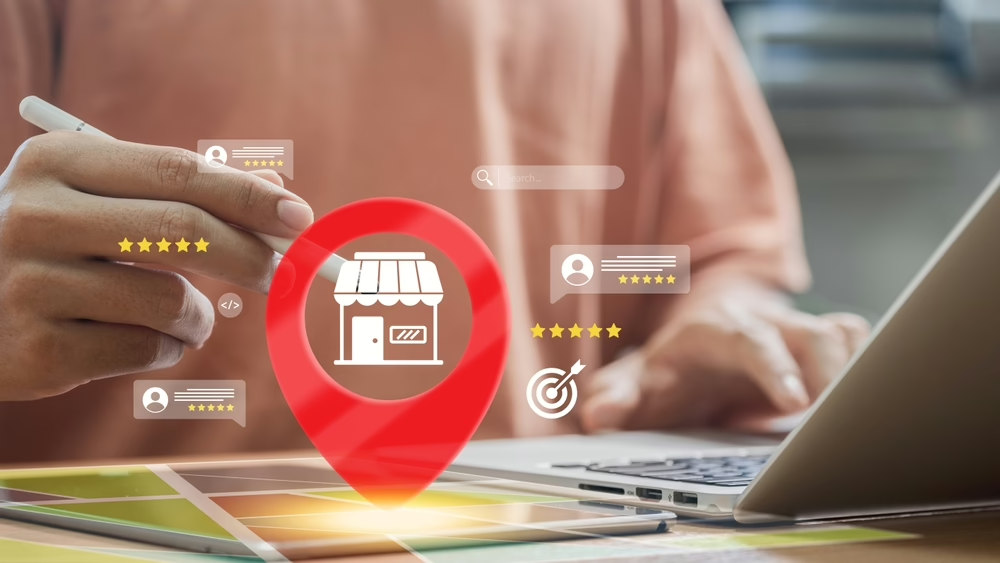
What Is an Enterprise Dashboard? Smart Ways to Build an Effective One
An enterprise dashboard is a centralized tool that displays critical data and metrics, providing a real-time performance overview. It combines key information from various departments or systems into a single interface, offering decision-makers insight into crucial aspects such as sales, finances, operations, and more.
This guide discusses how to build an enterprise dashboard with these elements:
 The best enterprise dashboard meets its intended users’ specific needs and preferences. It is usable and accessible, allowing users to navigate and interpret data easily. A user-centric approach increases platform adoption, engagement, and overall satisfaction. It leads to more effective utilization of the dashboard for informed decision-making within the organization. Consider these techniques to prioritize a user-centric design:
The best enterprise dashboard meets its intended users’ specific needs and preferences. It is usable and accessible, allowing users to navigate and interpret data easily. A user-centric approach increases platform adoption, engagement, and overall satisfaction. It leads to more effective utilization of the dashboard for informed decision-making within the organization. Consider these techniques to prioritize a user-centric design: Effectively visualizing data in an enterprise dashboard simplifies complex information. Clear and intuitive visual elements such as charts, graphs, and widgets enhance data interpretation and quick identification of trends, patterns, or anomalies. Visualization improves understanding and informs decisions by making critical information digestible and appealing. These are the best practices to effectively visualize data in an enterprise dashboard:
Effectively visualizing data in an enterprise dashboard simplifies complex information. Clear and intuitive visual elements such as charts, graphs, and widgets enhance data interpretation and quick identification of trends, patterns, or anomalies. Visualization improves understanding and informs decisions by making critical information digestible and appealing. These are the best practices to effectively visualize data in an enterprise dashboard: Creating a mobile-friendly design for an enterprise dashboard enhances its accessibility and convenience. Designing with multiple platforms in mind ensures seamless interaction for all users. A mobile-compatible dashboard lets users view crucial data and insights anywhere for faster, more informed decision-making. Here are tips to create a mobile-friendly design for an enterprise dashboard:
Creating a mobile-friendly design for an enterprise dashboard enhances its accessibility and convenience. Designing with multiple platforms in mind ensures seamless interaction for all users. A mobile-compatible dashboard lets users view crucial data and insights anywhere for faster, more informed decision-making. Here are tips to create a mobile-friendly design for an enterprise dashboard:
- Key metrics
- User-centric design
- Real-time data integration
- Visualization of data
- Customization and flexibility
- Mobile-friendly design
- Updates and maintenance
Want to learn more about the Digital Authority Partners approach to SEO? Watch this video!
1. Identify Key Metrics
Identifying key metrics is crucial in building an enterprise dashboard and leveraging enterprise SEO. Key metrics allow you to focus on the most relevant data for decision-making. Using them ensures the dashboard displays essential information aligned with the organization’s strategic objectives and key performance indicators (KPIs). These key metrics make the dashboard a targeted tool that allows users to access and analyze vital data quickly. Here are tips to identify significant metrics for a dashboard optimized for enterprise marketing:- Align metrics with the organization’s strategic goals. Focus on data directly influencing the objectives, such as sales targets, customer acquisition, operational efficiency, or financial performance.
- Consider relevant metrics in the industry, department, or specific business functions. Choose data that reflects the critical aspects of the operations and provides actionable decision-making insights.
- Opt for measurable and quantifiable metrics. Use reliable data consistently tracked over time for meaningful comparisons and analyses.
- Select metrics driving performance or indicating areas for improvement. Highlight metrics that influence business outcomes and drive success.
- Engage relevant stakeholders, including department heads, managers, and key decision-makers when selecting metrics.
2. Prioritize a User-Centric Design
 The best enterprise dashboard meets its intended users’ specific needs and preferences. It is usable and accessible, allowing users to navigate and interpret data easily. A user-centric approach increases platform adoption, engagement, and overall satisfaction. It leads to more effective utilization of the dashboard for informed decision-making within the organization. Consider these techniques to prioritize a user-centric design:
The best enterprise dashboard meets its intended users’ specific needs and preferences. It is usable and accessible, allowing users to navigate and interpret data easily. A user-centric approach increases platform adoption, engagement, and overall satisfaction. It leads to more effective utilization of the dashboard for informed decision-making within the organization. Consider these techniques to prioritize a user-centric design:- Understand the dashboard’s intended users. What are their needs, roles, and workflows? Gather feedback through surveys, interviews, or user testing to grasp their preferences and requirements.
- Design the dashboard to be easily accessible and intuitive for all users. Create a straightforward, organized, navigable user interface to cater to different levels of technical expertise.
- Provide customizable features so users can tailor their dashboard views based on their preferences and responsibilities. Offer options to rearrange widgets, choose vital metrics, or set preferences for a personalized experience.
- Make the dashboard responsive across different devices and screen sizes. Designing with a mobile-first approach allows users to seamlessly access and interact with the dashboard on smartphones, tablets, or desktops.
- Encourage ongoing user engagement by soliciting feedback regularly and implementing improvements based on user input. Maintain open communication channels to address user concerns and discuss design changes.
3. Integrate Real-Time Data
Integrating real-time data into an enterprise dashboard ensures users access the most current information. It enables prompt decision-making and a swift, insight-driven response to market changes. Additionally, incorporating live data feeds from various sources creates a dynamic and accurate representation of the organization’s performance. Follow these tips to effectively integrate real-time data into an enterprise dashboard:- Choose reliable and trustworthy sources for real-time data integration. They must provide accurate and up-to-date information relevant to the organization’s operations and objectives.
- Use robust integration tools, application programming interfaces, or middleware to efficiently gather, process, and integrate real-time data from various sources.
- Validate the data for accuracy, consistency, and reliability.
- Optimize the performance of data retrieval and display so that the dashboard remains responsive and provides timely updates.
- Apply caching techniques or data streaming to manage high volumes of real-time information without compromising speed or usability.
- Secure the data to protect sensitive information. Adhere to compliance standards and regulations concerning data privacy.
4. Visualize Data Effectively
 Effectively visualizing data in an enterprise dashboard simplifies complex information. Clear and intuitive visual elements such as charts, graphs, and widgets enhance data interpretation and quick identification of trends, patterns, or anomalies. Visualization improves understanding and informs decisions by making critical information digestible and appealing. These are the best practices to effectively visualize data in an enterprise dashboard:
Effectively visualizing data in an enterprise dashboard simplifies complex information. Clear and intuitive visual elements such as charts, graphs, and widgets enhance data interpretation and quick identification of trends, patterns, or anomalies. Visualization improves understanding and informs decisions by making critical information digestible and appealing. These are the best practices to effectively visualize data in an enterprise dashboard:- Select suitable charts, graphs, and visuals that best represent the data. Consider bar graphs, line charts, pie charts, or heat maps for different kinds of data.
- Avoid clutter. Simplify visuals by focusing on the key metrics and presenting understandable information. Use concise labels, legends, and colors to enhance clarity.
- Incorporate interactive elements such as filters, drill-down options, or hover-over tooltips. These features empower users to interact with the data for deeper analysis and personalized insights.
- Emphasize critical trends, outliers, or anomalies within the data with highlighting techniques. Use contrasting colors, annotations, or call-outs to draw attention to significant points of interest.
- Maintain consistency in design elements across the dashboard for a cohesive user experience. Provide contextual information or annotations to explain data points and offer additional insights when necessary.
5. Include Customization and Flexibility
Customization and flexibility make an enterprise dashboard useful for diverse users with diverse goals. Customizable options allow people to tailor their dashboard views to their requirements and workflows. Flexibility ensures that individuals can prioritize the data relevant to their roles, enhancing usability and increasing user engagement. Consider these options when incorporating customization and flexibility in an enterprise dashboard:- Adopt a modular approach to let users arrange and customize dashboard components. Permit them to add, remove, or rearrange widgets/modules based on their needs.
- Allow users to customize features according to data visualization, timeframes, or metrics displayed. Offer options for color schemes, themes, or layout variations to suit individual preferences.
- Consider creating dashboards tailored to different roles or departments within the organization. Customize content and metrics relevant to each user group’s responsibilities and objectives.
- Integrate flexible widgets and interactive filters that users can manipulate to drill down into specific data subsets or adjust criteria for personalized views.
- Enable users to save their customized views or settings for future access. Provide options to bookmark or save preferred configurations.
6. Create a Mobile-Friendly Design
 Creating a mobile-friendly design for an enterprise dashboard enhances its accessibility and convenience. Designing with multiple platforms in mind ensures seamless interaction for all users. A mobile-compatible dashboard lets users view crucial data and insights anywhere for faster, more informed decision-making. Here are tips to create a mobile-friendly design for an enterprise dashboard:
Creating a mobile-friendly design for an enterprise dashboard enhances its accessibility and convenience. Designing with multiple platforms in mind ensures seamless interaction for all users. A mobile-compatible dashboard lets users view crucial data and insights anywhere for faster, more informed decision-making. Here are tips to create a mobile-friendly design for an enterprise dashboard:- Design the dashboard interface to be responsive and adapt seamlessly to various screen sizes and orientations. Use mobile-compatible design frameworks for consistent and optimized displays.
- Focus on presenting essential information and critical metrics upfront for mobile users. Prioritize necessary data and functionalities to fit the smaller screen size and ensure easy access to vital insights.
- Implement user-friendly navigation optimized for touch screens. Use clear and intuitive icons, menus, and gestures to facilitate easy navigation and interaction.
- Streamline the dashboard’s performance for mobile by optimizing loading times and reducing unnecessary elements.
- Compress images and minimize data loads for faster speeds on mobile networks.
- Conduct thorough testing across various mobile devices and gather user feedback to refine the mobile dashboard’s usability. Involve users in the testing phase to identify usability issues or improvement areas.
7. Perform Regular Updates and Maintenance
Regular updates and maintenance make an enterprise dashboard relevant and effective over time. Regular updates reflect changes in business goals, KPIs, and user requirements to align the tool with organizational needs. Maintenance helps fix bugs, improve performance, and incorporate new features that retain a dashboard’s functionality, reliability, and continued support. Make the most of your regular updates and maintenance:- Establish a regular schedule for dashboard maintenance, including updates, bug fixes, and performance optimizations. Plan periodic maintenance to address issues and implement enhancements.
- Monitor enterprise metrics, such as loading times, response rates, and user interactions. Use end-user tracking tools to identify improvement areas and implement necessary updates accordingly.
- Employ version control mechanisms to manage changes and updates systematically. Maintain a record of the dashboard’s updates, versions, and modifications for transparency.
- Gather user feedback regularly and conduct user testing to identify usability issues or areas for improvement.
- Incorporate user suggestions and insights into the update and maintenance roadmap.
- Avoid enterprise optimization reporting mistakes. Stay vigilant about security threats and vulnerabilities. Regularly apply security patches, run updates, and follow best practices to safeguard data integrity and protect the dashboard from security breaches.
Summing Up
These strategies help organizations build an enterprise dashboard that effectively consolidates and presents critical information. It empowers decision-makers with accessible, updated, actionable insights for improved business performance. Work with an expert enterprise SEO agency to create an effective dashboard for your company. Contact Digital Authority Partners for the latest in SEO, digital marketing, and more.Want To Meet Our Expert Team?
Book a meeting directly here



